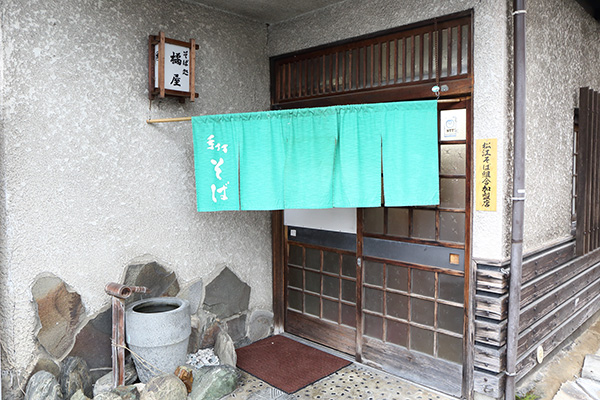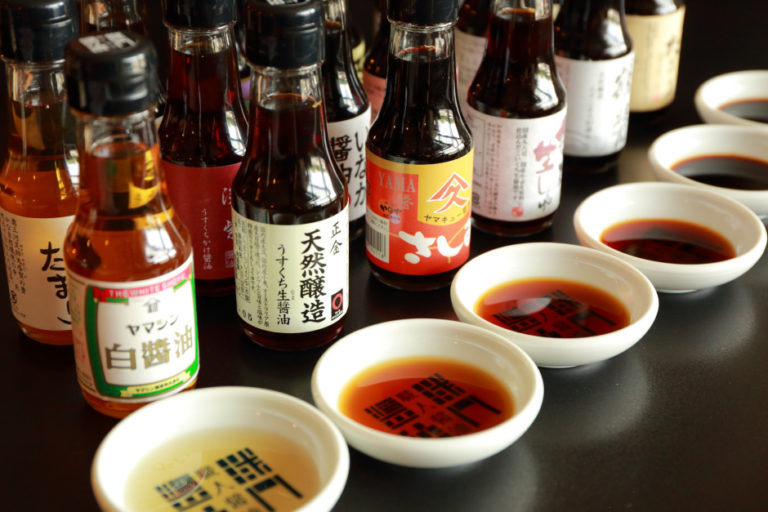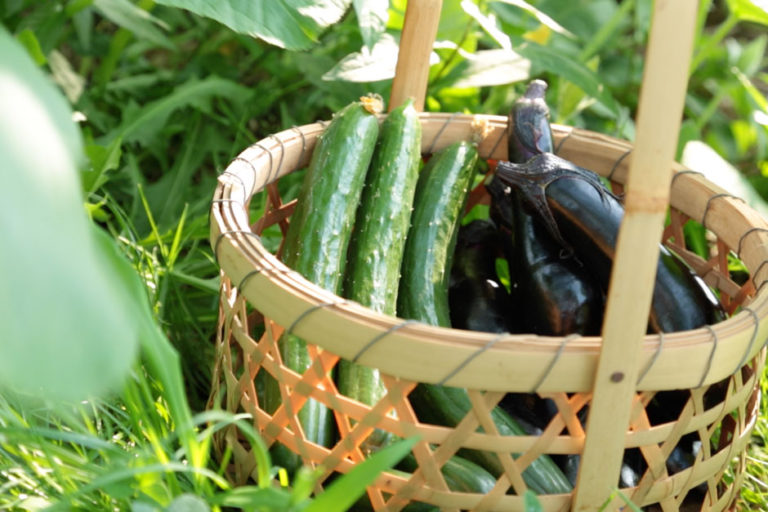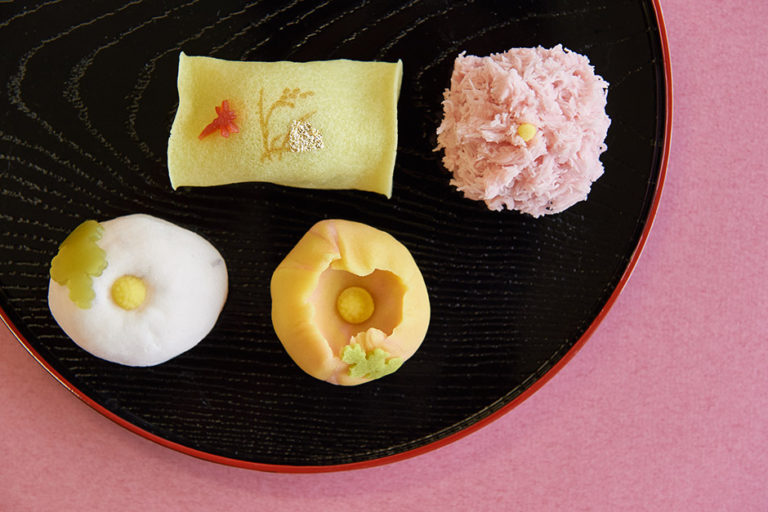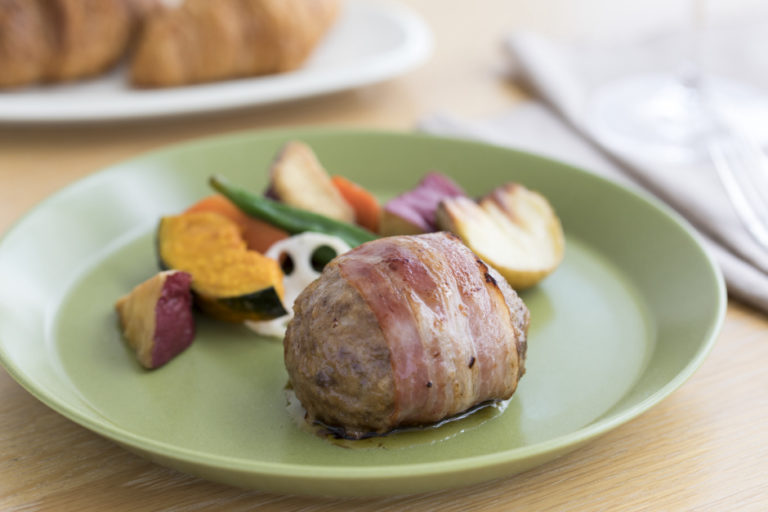Locally Grown Izumo Noodle Serves the Region’s Tradition and Passion
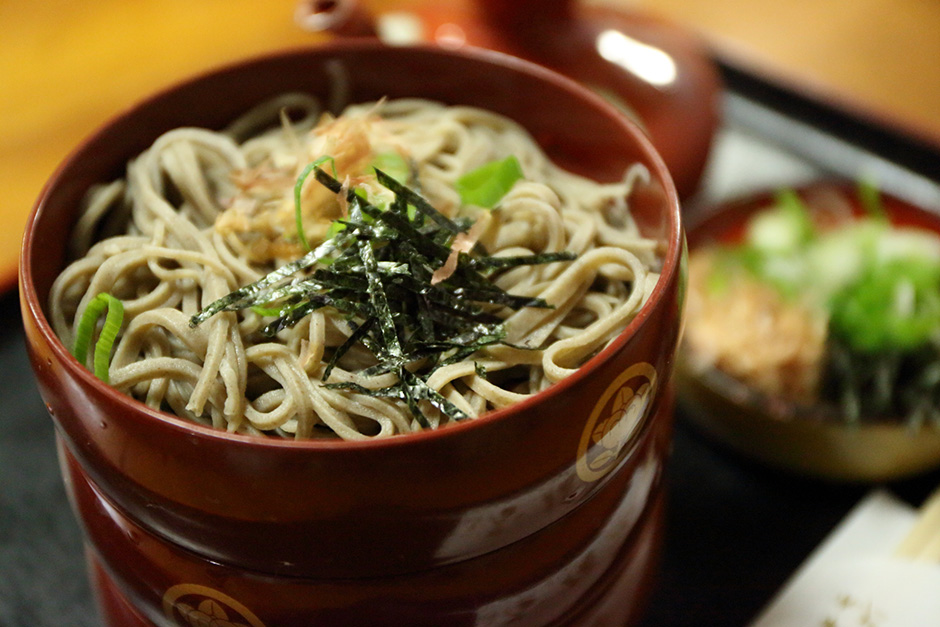
Even today, there are many long-established soba restaurants near Izumo Taisha and in Matsue, making Izumo soba one of the best known cuisines of Shimane Prefecture.
Soba culture that has been passed on in Izumo
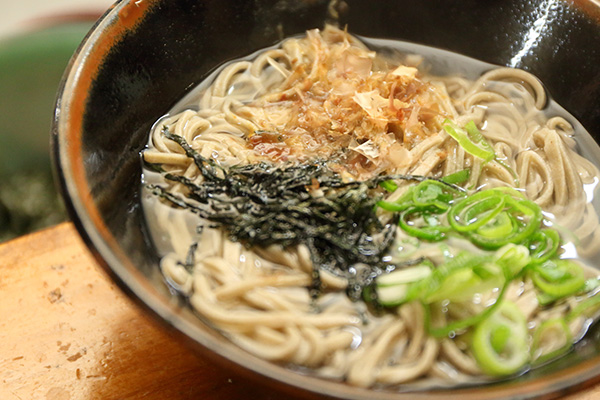
Izumo soba is counted as one of the three greatest sobas of Japan, along with Shinshu soba and Wanko soba. It is said that soba spread throughout the Izumo region because Lord Naomasa Matsudaira, the first feudal lord of the Matsue domain, had brought a soba master from the Shinshu Matsumoto domain with him when he moved to Matsue.
Izumo soba is served in a unique manner. Unlike most other sobas, it is served in the hot water it has been cooked in, which is a style called kamaage. Another way of serving soba is warigo, where it is served in a container called warigo and a sauce and condiments are poured over the soba.
The kamaage style is said to have hailed from the area around Izumo Taisha.
In this area, people apparently set up booths outdoors to offer soba to visitors of the Izumo Taisha, as the shrine’s Kamiarisai Festival (held in October of the old Japanese calendar), a festival where gods from all over Japan were said to get together, was held in the new soba season. People were unable to rinse each batch of soba they cooked in the booths, so they took up the kamaage style where they put the soba in a container with the hot water it was cooked in. People could then add just the right amount of sauce and condiments they liked, on top of the soba in the hot water, to adjust the taste to their preference.
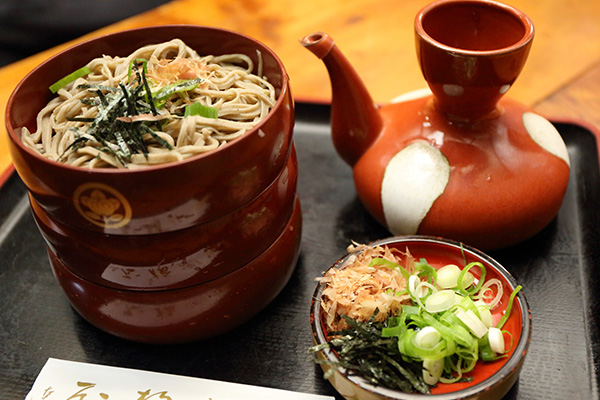
The other one, warigo soba, is cold, drained noodles.
Apparently it started in the Edo period (1603–1868) when, a cross-hierarchy circle of hobbyists called Ren in the castle town of Matsue used containers called warigo to take their soba lunch outdoors, and had the soba with sauce and condiments poured directly on top of it.
The ways of eating soba, which varied from region to region, were passed down from generation to generation, building the Izumo soba culture.
However, with the passing of time, people started making Izumo soba with buckwheat sourced from overseas or from other regions. Under such circumstances, people from local soba restaurants in Matsue started expressing that they wanted to make soba with buckwheat grown in Matsue. The city, Matsue Chamber of Commerce, Matsue’s producers, agricultural co-op and soba restaurants got together to start growing gentan buckwheat, a home-grown, Matsue buckwheat, using fallow fields.
In this early, new soba season, we visited a buckwheat producer in Matsue.
Growing buckwheat in fallow fields
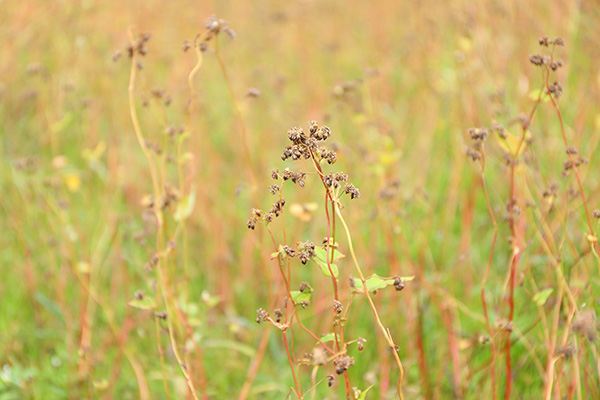
Driving through Matsue, we saw many buckwheat fields in the last stage of harvest.
Producer Akitoshi Yamane showed us around his buckwheat field, as he looked up at the sky, which a downpour appeared likely at any time.
“Buckwheat does not do well in the rain. When it rains, their roots rot and they go bad all at once. We had a hard time this year because of the typhoon, but climate is something we cannot do anything about.”
Yamane is the Head of Matsue Gentan Soba Group.
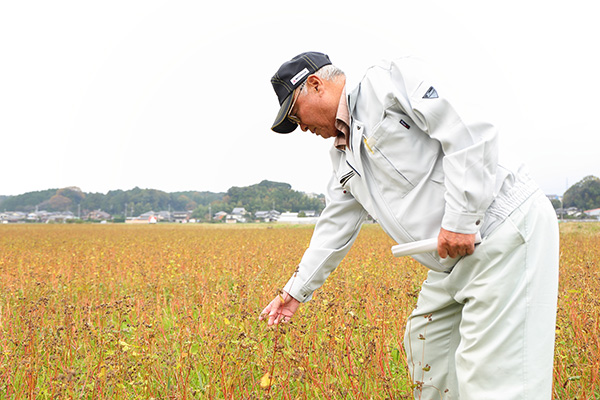
Matsue grows buckwheat, using fallow fields that have been abandoned because of the government’s policy to reduce acreage for rice paddies. Locally grown buckwheat has been named gentan soba, which is a pun on the word gentan (which means rice-acreage reducing policy in Japanese, and also part of the name of Gentan Kayo, a heroic woman who saved the Matsue domain at the end of the Edo period), entailing the wish that buckwheat saves paddy fields from desolation.
“We started growing buckwheat in earnest in 1997. Buckwheat likes dry land, so it was quite difficult earlier on, to plant it in fields that used to be paddy fields.
When I see the white buckwheat flowers bloom in mid-September, I feel a sense of relief, thinking I have managed to come this far again this year. It is at this time when I feel my work planting buckwheat is most meaningful,” says Yamane.
Regional cooperation improves gentan soba’s quality
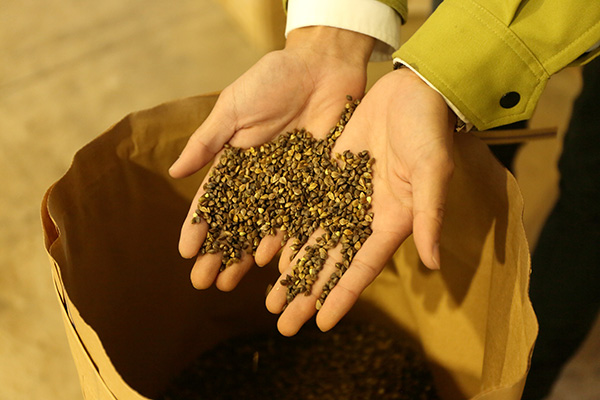
Thanks to the producers’ efforts and support from the city and national agricultural co-ops, the area for growing buckwheat has increased each year, to about twice as much as that of ten years ago. Nowadays soba is one of Matsue’s best-known specialties.
In Matsue, producers, business operators, agricultural co-ops, the City of Matsue, and Matsue Chamber of Commerce cooperate with each other for steady production and to improve product quality.
Buckwheat’s harvest season is between early October and early November; however, as producers are growing older and as harvesting requires a lot of work and money, a business operator from the city singlehandedly deals with harvest.
Masahiro Fujii, who harvests, dries and adjusts buckwheat, pays careful attention to harvesting buckwheat producers have grown with such care.
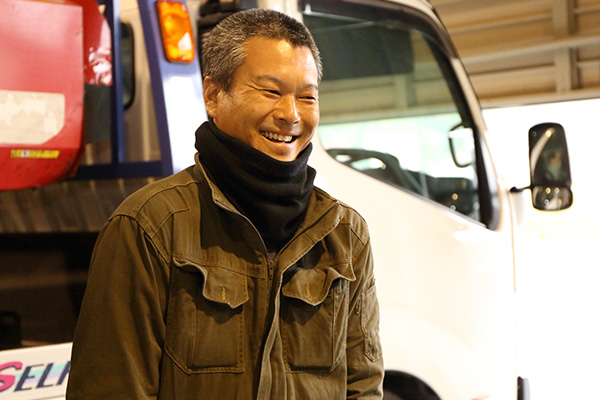
“Each field has a different shape and different soil properties, so I have to be very careful when I harvest the buckwheat. Some fields are incredible. There is one field with a corner of an acute angle,” chuckles Fujii.
The harvested buckwheat fruit is dried and inspected after impurities are removed. It is then stored in warehouses where temperatures and humidity are strictly controlled for each variety and grade, before shipping.
Different soba restaurants want different buckwheat varieties and grades. When it comes to soba they are tough connoisseurs.
“In Matsue, we mostly grow an indigenous local variety and another variety from Nagano Prefecture called Shinano Ichigo. The indigenous variety is small but very aromatic. Some local soba restaurants prefer to use this variety by itself,” says Fujii.
The four elements of freshness, only available in the new soba season
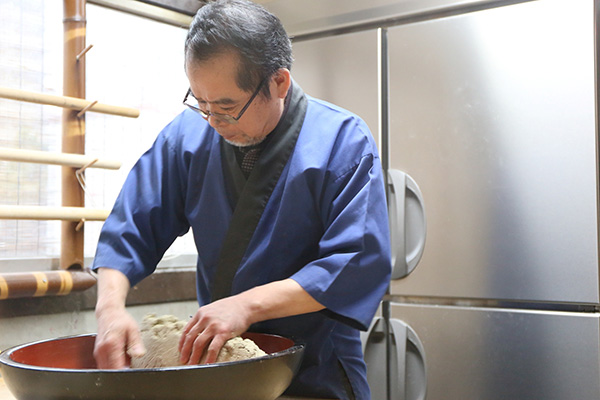
Great soba is said to be fresh in three ways: using freshly milled flour, freshly kneaded noodles, and freshly cooked. The new soba season is the best time to enjoy the fresh aroma of soba, as the soba is also freshly harvested.
Yoshihiro Onda, the owner and chef of a soba restaurant, Tachibanaya, in Matsue, has dedicated his entire life to soba, having started training to make soba when he was 15. He also mills buckwheat himself.
“The locally grown buckwheat has a great aroma. Actually, buckwheat fruit does not really have any aroma. The aroma is in the skin. I mix in finely crushed endocarp to give a bit of wild edge that is unique to gentan soba.”
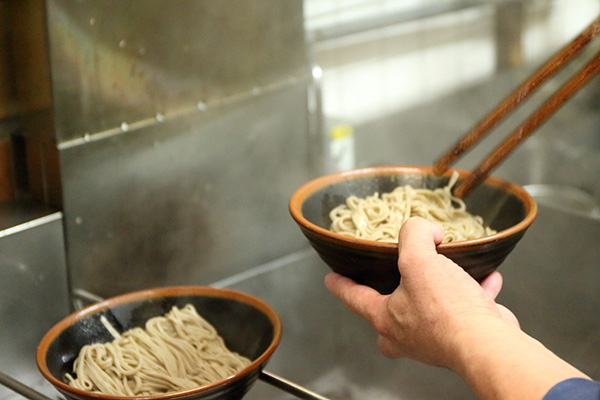
Apparently, freshly harvested buckwheat feels different to the touch when it is kneaded.
“Izumo soba is originally dark because the buckwheat fruit is milled including its black skin. But the new buckwheat is more bluish. It also feels moist, and needs less water than usual.”
Says Onda, efficiently kneading and rolling the buckwheat. He cooked soba for us, having quickly prepared it with such skills and experience.
He served us kamaage soba first. When we sipped the soba with the hot soba water containing buckwheat flour, the soba’s aroma spread our mouths. It is accented well with the sweet sauce and condiments.
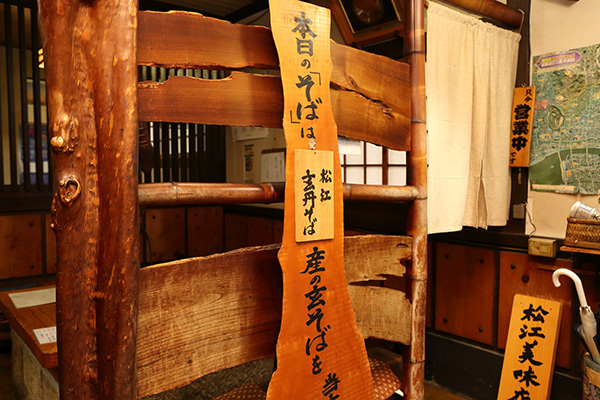
Next, we had warigo soba. Soba, cooked in hot water and then cooled in cold water, becomes elastic and its strong aroma spread through our nostrils with each bite. The soba is more elastic than other regular cooled soba. We need to bite it, rather than sipping it.
“If you want to enjoy the unique aroma of gentan soba, warigo is the best way to have it. It uses freshly harvested buckwheat, freshly milled, freshly kneaded and freshly cooked. When the soba has these four elements, it tastes extraordinary,” says Onda.
Apparently, each year local residents look forward to the new soba made from gentan buckwheat.
The Izumo soba culture that has been passed down since ancient times continues to be refined by local residents. If you have a chance to visit Izumo Taisha, why not enjoy the taste and culture of Izumo soba that has been watched over by the gods?

